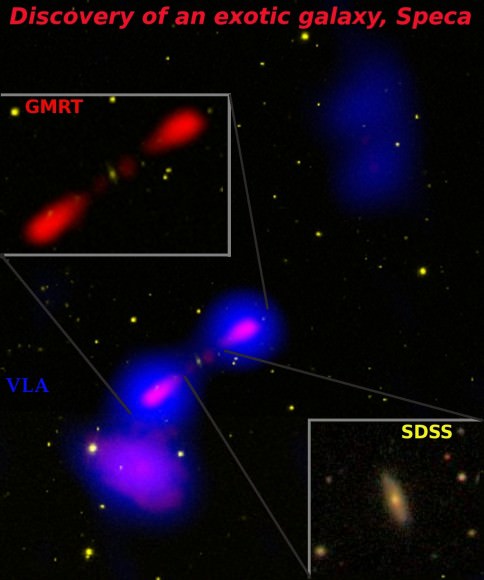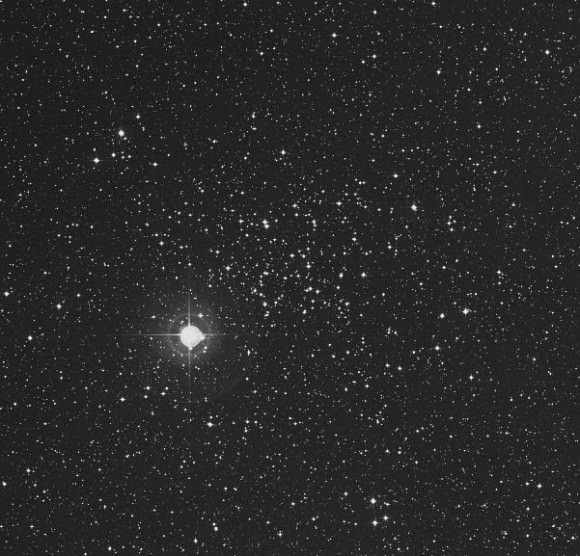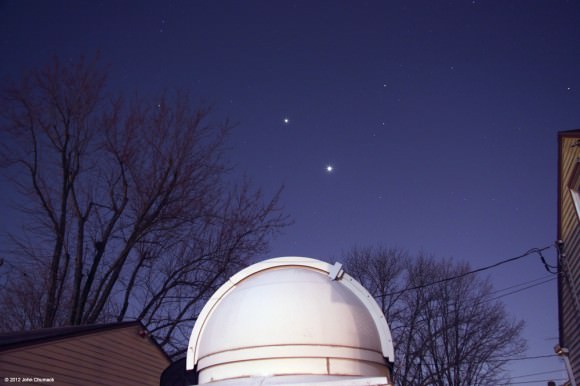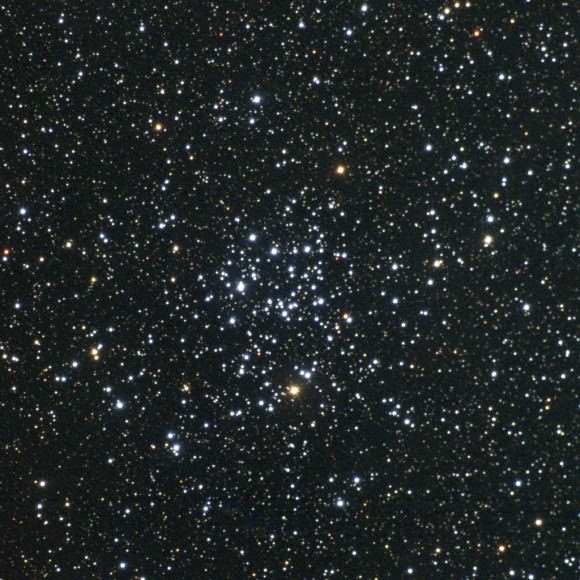By Craig Weatherwax
The day broke cloudy and gray, an inauspicious beginning to a day when OPT wanted to share viewing the sun with the 27,000 people who would attend the 4th annual San Diego Festival of Science and Engineering held at PetCo Park. We were already committed to the event so we hitched up our pants and soldiered on!
The Booth:
Penny and her “ah” team…Tanya, Rayna, Theresa, and Diana did a fantastic job of decorating the “double wide” booth and “womaning” the booth all day. We had solar beads and do it yourself sun dials (as you can tell, solar was the theme for OPT), to give away to the attendees of the festival. They helped make and gave away over 1300 solar bead bracelets….(I’m sure they must have had dreams/nightmares of them that night) and a like number of sun dials, to the delight of the crowd. They were tireless in their enthusiasm for the event. I can’t thank them enough.
The Solar Observing:
Captains Doug McFarland and Paul Cooper and their motley crew Ralph, Rod and myself, set up the solar scopes in hopes the sky would cooperate. We had a Coronado PST and a Lunt double stack 60 dedicated solar scopes on a iOptron Mini tower Pro, a Celestron 102mm with a 1000 Oaks white light filter and an Orion 80mm Refractor with a Coronado 40mm h-alpha filter on an Orion Atlas mount, and an 80mm Orion refractor with a 1000 Oaks white light filter and another Orion 80mm scope with a Coronado 40mm h-alpha filter on a Meade LXD55 mount. All the mounts were computer robotic and worked flawlessly all day, except when kids failed to heed our advice of “please don’t touch the telescope, just look through it”. Fortunately this didn’t happen too often.
Well, the sky cleared up enough to give us a view of the sun, but initially there was too much cloud cover to see any prominences. We were treated to a fairly rare solar event, at least in San Diego, a solar halo It was very cool!
Things were going great until the sun got eclipsed by one of the high-rises downtown about 2PM. Undaunted, we grabbed the scopes and mounts and hiked up to the top of a hill at the “park at the park “ at PETCO Park. Set them up again, and 20 minutes later we were viewing again. We were rewarded for our move by the sky clearing and the ability to see some solar activity…sun spots through the white light filters and solar prominences through the H-Alpha scopes….it was very exciting and quite the crowd pleaser! With the 6 scopes and the 5 guys manning them, I figure we were able to accommodate 10 people per minute, so in the almost 7 hours of viewing we were able to share our closest star with over 4000 people!
When 5PM finally arrived 10 very exhausted OPT employees broke down the booth and hand carried all the booth paraphernalia and solar observing equipment to the waiting vans.
Was it worth it? You bet!
Check out more photos from the event on our Facebook page.
OPT is a telescope and camera store in San Diego County, California, and our website, OPTTelescopes.com, is one of the most trusted online astronomy stores in the world. We've been around since 1947, and our employees are involved in various aspects of astronomy...from professional quality CCD imaging to writing books on what's up in the sky. We've got a lot to share, and this is where we will share it! Welcome!
Thursday, March 29, 2012
Monday, March 26, 2012
Product Review: The TeleVue Plossl – Unsung Eyepiece Hero
 If you're into telescopy, then you know the name Televue needs little or no introduction at all. The name is absolutely synonymous with the most outstanding quality and high performance optics in the business and every product is backed by uncompromising standards. Of course, if you're like me, the moment I see the name Televue little dollar signs start swimming around in front of my eyes. Would you like me to shoo them away for you?
If you're into telescopy, then you know the name Televue needs little or no introduction at all. The name is absolutely synonymous with the most outstanding quality and high performance optics in the business and every product is backed by uncompromising standards. Of course, if you're like me, the moment I see the name Televue little dollar signs start swimming around in front of my eyes. Would you like me to shoo them away for you?
Saturday, March 24, 2012
Weekly SkyWatcher's Forecast - March 26 to April 1, 2012

Greetings, fellow SkyWatchers! Have you been following the supernova in M95? Who would have ever believed Mars could be considered "light pollution"? Take advantage of darker skies and catch it now! It's another planetary showdown as the week begins with Jupiter, Venus, the Moon and the Pleiades lighting up the western twilight sky. Right now is an awesome time to study lunar features and to go asteroid hunting! Get out those telescopes and binoculars and I'll meet you in the back yard...
Wednesday, March 21, 2012
Speca – An Intriguing Look Into The Beginning Of A Black Hole Jet

A unique galaxy, which holds clues to the evolution of galaxies billions of years ago, has now been discovered by an Indian-led international team of astronomers. The discovery, which will enable scientists to unearth new aspects about the formation of galaxies in the early universe, has been made using the Giant Meterwave Radio Telescope (GMRT) of the National Centre for Radio Astrophysics, Tata Institute of Fundamental Research (NCRA-TIFR). CREDIT: Hota et al., SDSS, NCRA-TIFR, NRAO/AUI/NSF
Its catalog number is NGC 3801, but its name is SPECA - a Spiral-host Episodic radio galaxy tracing Cluster Accretion. That's certainly a mouthful of words for this unusual galaxy, but there's a lot more going on here than just its name. “This is probably the most exotic galaxy with a black hole, ever seen. It has the potential to teach us new lessons about how galaxies and clusters of galaxies formed in the early Universe,” said Ananda Hota, of the Academia Sinica Institute of Astronomy and Astrophysics (ASIAA), in Taiwan and who discovered this exotic galaxy. "We find this merger-remnant early-type galaxy to have an intriguing spiral-wisp of young star forming regions."
Saturday, March 17, 2012
Weekly SkyWatcher's Forecast - March 19-25, 2012

Greetings, fellow SkyWatchers! The week starts off with new Moon and the perfect opportunity to do a Messier Marathon. The planets continue to dazzle as we not only celebrate the Vernal Equinox, but the March Geminid meteor shower as well! If that doesn't get your pulsar racing - nothing will. It's time to get out your binoculars and telescopes and meet me in the backyard!
Wednesday, March 14, 2012
The Care And Feeding Of Teenage Galaxies… And By The Way, They Need Gas

Got a teenager? Then you know the story. Go to look for your favorite bag of chips and they're gone. You eat one portion of meat and they need three. If you like those cookies, then you better have a darn good place to stash them. And, while you're at it, their car needs gas. Apparently there's a reason for the word "universal", because teenage galaxies aren't much different. Thanks to some new studies done by ESO’s Very Large Telescope, astronomers have been able to take a much closer look at adolescent galaxies and their "feeding habits" during their evolution. Some 3 to 5 billion years after the Big Bang they were happiest when just provided with gas, but later on they developed a voracious appetite... for smaller galaxies!
Sunday, March 11, 2012
Weekly SkyWatcher's Forecast - March 12-18, 2012

Greetings, fellow SkyWatchers! What an awesome display of planets! Please take the time to walk outdoors just after skydark - regardless of where you live - and enjoy the bright display of Venus and Jupiter! However, this isn't the only planetary action going on this week... Mars and M96 pair up, as well as Uranus and the Moon. There's even a Southern Hemisphere meteor shower to enjoy! Pretty exciting, huh? Join the party by getting out your binoculars or telescopes and meet me for more in the backyard...
Wednesday, March 7, 2012
OPT Named a DiversityBusiness Award-Winner
OPT has distinguished itself as one of the top small businesses in the country by being recognized among the 2 million companies registered in DiversityBusiness.com's directory in three categories; Top 500 Diversity Owned businesses in the United States, Top 500 privately held businesses in the United States, and Top 100 Diversity Owned businesses in California. For 12 years, DiversityBusiness.com has collected and compiled these lists on a state and national basis, and OPT is immensely proud to be included on them.
About DiversityBusiness: Launched in 1999, DiversityBusiness, with over 250,000 members, is the largest organization of diversity owned businesses throughout the United States that provide goods and services to Fortune 1000 companies, government agencies, and colleges and universities. DiversityBusiness provides research and data collection services for diversity including the "Top 50 Organizations for Multicultural Business Opportunities", "Top 500 Diversity Owned Companies in America", and others. Its research has been recognized and published by Forbes Magazine, Business Week and thousands of other print and internet publications. The site has gained national recognition and has won numerous awards for its content and design.
FourStar Service: Red Galaxy Cluster Hides In Plain Sight

An infared image of the cluster. Three narrow slices of the infrared spectrum are represented in this color composite. The colors have been balanced to accentuate the red galaxies at a distance of 10.5 billion light years. Credit: FourStar Galaxy Evolution Survey ("Z-FOURGE") Click to open animation in a new window.
Located some 10.5 billion light years away in the general direction of the constellation of Leo, the most distant cluster of red galaxies so far discovered has been hiding in plain sight... until now. Thanks to the advanced observing techniques of FourStar, a new and powerful near-infrared camera on the 6.5m Magellan Baade Telescope, we're now able to peer beyond faint and into the realm of the faintest. It's 30 galaxies packed like sardines in a tin and their formation is the earliest known “galaxy city” in the Universe!
Sunday, March 4, 2012
Weekly SkyWatcher's Forecast: March 5-11, 2012

Greetings, fellow SkyWatchers! Our week begins with the dance of the planets and a gathering of asteroids. Keep watching as Mars makes its closest approach of the year - while Venus and Jupiter continue to get nearer. Celebrate the Full Worm Moon, interesting stars and beautful galaxies and clusters! Dust off those binoculars and telescopes and meet me in the backyard, because... Here's what's up!
Subscribe to:
Comments (Atom)

